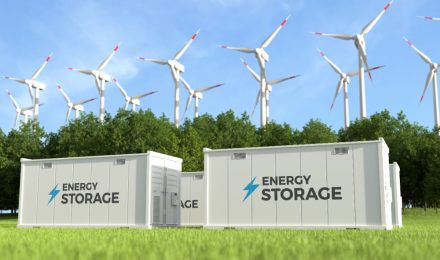As the world focuses on sustainability, solar and wind energy have taken center stage. However, their intermittent nature poses a significant challenge in providing energy consistently. To address this issue, energy storage solutions have emerged as a crucial element in ensuring a continuous power supply. In recent years, several groundbreaking renewable energy storage technologies have been developed, poised to transform the energy sector. Let’s explore these innovative solutions.
Ten Cutting-Edge Energy Storage Solutions
Battery Energy Storage Systems (BESS)
Battery Energy Storage Systems (BESS) have garnered widespread attention due to their versatility and scalability. Lithium-ion batteries, known for their high energy density, are becoming the leading choice in this segment. These batteries store excess energy generated during peak production periods, which can then be discharged when demand is high, helping to stabilize the renewable energy grid. Continuous advancements in battery chemistry and manufacturing processes are also driving down costs, making BESS more affordable and accessible.
Pumped Hydroelectric Storage
Pumped hydroelectric storage is one of the oldest and most reliable large-scale energy storage solutions. It operates by pumping water from a lower reservoir to a higher one when excess energy is available, and then releasing it to generate electricity during periods of high demand. Although it has been around for a long time, pumped hydro storage remains highly efficient, with round-trip efficiencies exceeding 80%. Its long lifespan and low operational costs make it an enduring choice for large energy storage systems.
Thermal Energy Storage
Thermal energy storage systems store heat or cold for later use. This technology is particularly well-suited for concentrated solar thermal power plants, where excess heat can be stored in mediums like molten salts and used to generate electricity when sunlight is unavailable. Additionally, thermal energy storage can provide heating and cooling to residential, commercial, and industrial properties, reducing energy bills and easing peak demand on the grid.
Flywheel Energy Storage
Flywheel energy storage systems store energy in the form of rotational kinetic energy. A rotor spins inside a vacuum-sealed chamber, and energy is stored by increasing the rotor’s speed, then released by slowing it down. Unlike pumped hydro storage, flywheels offer fast response times and high cycle efficiencies, making them ideal for applications that require short-term energy storage and frequency regulation. Their modular design also allows for large-scale deployment across a variety of applications.
Compressed-Air Energy Storage (CAES)
Compressed-Air Energy Storage (CAES) systems work by storing energy as compressed air in underground caverns or pressurized tanks during periods of low demand. This air is then released to generate electricity when demand increases. While traditional CAES systems have been limited by the availability of suitable geological formations, recent advancements in adiabatic and isothermal CAES technologies are expanding their potential. Next-generation CAES systems offer improved efficiency, reduced environmental impact, and greater applicability for electricity grids.
Hydrogen Energy Storage
Hydrogen energy storage converts excess renewable energy into hydrogen through electrolysis, a process that splits water molecules into hydrogen and oxygen. The stored hydrogen can be used later to generate electricity in fuel cells or as feedstock for industrial processes. Hydrogen storage offers high energy density and long-duration storage, making it an ideal solution for grid energy storage in both seasonal and long-term scenarios. Additionally, hydrogen can replace fossil fuels in transportation and heating, further enhancing its appeal.
Sustainable (Grid-Scale) Energy Management Systems
Advanced grid energy management systems, powered by artificial intelligence (AI), machine learning, and predictive analytics, optimize energy storage operations and maximize efficiency. These intelligent systems can forecast energy demand, optimize charging and discharging cycles, and adjust storage settings in real-time based on data input. By integrating renewable energy sources, storage capabilities, and demand-side management, these systems create more reliable, resilient, and sustainable energy infrastructures.
Gravity-Based Energy Storage
Gravity-based energy storage systems use the potential energy of elevated masses, such as heavy concrete blocks or containers filled with large weights. During periods of excess energy production, motors lift these masses to higher elevations, converting the energy into gravitational potential energy. When demand is high, the masses are lowered, driving generators to produce electricity. Gravity-based storage offers long-duration energy storage and can be installed in various geographical locations, making it suitable for both grid-connected and stand-alone applications.
Superconducting Magnetic Energy Storage (SMES)
Superconducting Magnetic Energy Storage (SMES) systems store energy in magnetic fields created by superconducting coils. When surplus energy is available, electric currents are applied to the coils, creating magnetic fields that store the energy. This energy can then be quickly released as electrical current when needed. SMES systems are known for their high power density, fast response times, and nearly unlimited cycle life, making them ideal for high-performance energy storage applications.
Redox Flow Batteries
Redox flow batteries store energy as chemical energy in electrolyte solutions kept in separate tanks. During charging, electricity is used to change the state of the electrolytes, storing energy in the process. When discharging, the electrolytes are pumped through a cell stack, where chemical reactions generate electricity. Redox flow batteries are valued for their scalability, long cycle life, and ability to decouple energy storage capacity from power output, making them ideal for flexible and modular energy storage. The discovery of abundant and cost-effective materials, like vanadium, is also enhancing the sustainability of this technology.
Conclusion
The rapid development of advanced renewable energy storage systems is opening up new possibilities in the transition to a sustainable energy future. From batteries to pumped hydro storage and beyond, these breakthrough technologies are paving the way for greater renewable energy integration into the grid, reducing greenhouse gas emissions, and enhancing energy security and resilience. By continuing to develop and invest in diverse renewable energy storage technologies, we can build a brighter and more sustainable future for generations to come.



